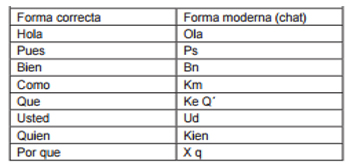
10.15178/va.2019.148.41-55
RESEARCH
ANALYSIS OF THE COMMUNICATIONAL ABBREVIATIONS OF WRITTEN LANGUAGE IN THE FACEBOOK SOCIAL NETWORK
ANÁLISIS DE LAS ABREVIATURAS COMUNICACIONALES DEL LENGUAJE ESCRITO EN LA RED SOCIAL FACEBOOK
ANALISES DAS ABREVIATURAS COMUNICACIONAIS DA LIGUAGEM ESCRITA NA REDE SOCIAL FACEBOOK
Jonathan Sabando Rendón1
Degree in Social Communication Sciences at the University of Guayaquil
Tomás Rodríguez Caguana2
University of Guayaquil. Ecuador1,2
ABSTRACT
This research analyzes the grammatical configurations implemented in the construction of written language messages, through the social network Facebook in a group of 100 students, for which the problem to be investigated was defined: what is the impact of the social network Facebook on the use of communication abbreviations of language written in the second and third year students of the Pedro J. Montero Educational Unit? General Objective: to study the incidence of communicational abbreviations of the written language on the social network Facebook. Hypothesis: The factors which influence on the use of communication abbreviations of the written language in the social network are the use of chat as a means of virtual communication and the immediacy in coding of the message. Variables: written language and virtual communication. Type: descriptive. Design: no-experimental-transectional. Methodology: empiricism. Techniques: four qualitative and four quantitative. Sample: not probabilistic-per quota. Results: hypothesis was approved.
KEY WORDS: communication, written language, grammar configuration, virtual communication, cyberlanguage, social networks, Facebook, virtual interaction, abbreviations
RESUMEN
Esta investigación analiza las configuraciones gramaticales implementadas en la construcción de mensajes del lenguaje escrito, a través de la red social Facebook en un grupo de 100 estudiantes, el problema a investigar se definió: ¿Cuál es el impacto de la red social Facebook en el uso de abreviaturas comunicacionales del lenguaje escrito en los estudiantes de segundo y tercero bachillerato de la Unidad Educativa Pedro J. Montero? Objetivo General: estudiar la incidencia de las abreviaturas comunicacionales del lenguaje escrito en la red social Facebook. Hipótesis: los factores que inciden en el uso de abreviaturas comunicacionales del lenguaje escrito en la red social Facebook son el uso del chat como medio de comunicación virtual y la inmediatez en la codificación del mensaje. Variables: lenguaje escrito y Comunicación virtual. Tipo: descriptivo. Diseño: no experimental-transeccional. Metodología: empirismo. Técnicas: cuatro cualitativas y cuatro cuantitativas. Muestra: no probabilística-por cuota. Resultados: hipótesis comprobada.
PALABRAS CLAVE: comunicación, lenguaje escrito, configuración gramatical, comunicación virtual, ciberlenguaje, redes sociales, Facebook, interacción virtual, abreviaturas
RESUME
Esta investigação analisa as configurações gramaticais implementadas na construção de mensagens da linguagem escrita através da rede social Facebook em um grupo de 100 estudantes, o problema investigado define-se: Qual e o impacto da rede social Facebook no uso de abreviaturas comunicacionais da linguagem escrita nos estudantes de segundo e terceiro ano da Universidade Educativa Pedro J. Montero? Objetivo geral: estudar a incidência das abreviaturas comunicacionais escritas na rede social Facebook. Hipóteses: os fatores que incidem no uso de abreviaturas comunicacionais da linguagem escrita na rede social Facebook são o uso do chat como meio de comunicação virtual e a rapidez na codificação da mensagem. Variáveis: linguagem escrita e Comunicação virtual. Tipo: descritivo. Desenho: não experimental – transeccional. Metodologia: empirismo. Técnicas: quatro qualitativas e quatro quantitativas. Mostra: não probabilística – por cota. Resultados: hipótese comprovada.
PALAVRAS CHAVE: comunicação, linguagem escrita, configuração gramatical, comunicação virtual,ciberlinguagem, redes sociais, Facebook, interação virtual, abreviaturas
Correspondence: Jonathan Sabando Rendón. University of Guayaquil. Ecuador.
jonathan.sabandor@ug.edu.ec
Tomás Rodríguez Caguana. University of Guayaquil. Ecuador.
tomas.rodriguezc@ug.ec
Received: 27/08/2018
Accepted: 08/04/2019
Published: 15/09/2019
How to cite the article: Sabando Rendón, J. and Rodríguez Caguana, T. (2019). Analysis of the communicational abbreviations of the written language in the Facebook social network. [Análisis de las abreviaturas comunicacionales del lenguaje escrito en la red social Facebook]. Vivat Academia. Revista de Comunicación, 148, 41-55.
DOI: http://doi.org/10.15178/va.2019.148.41-55
Recovered from http://www.vivatacademia.net/index.php/vivat/article/view/1132
1. INTRODUCTION
In the contemporary world, users belonging to a social network send millions of messages a day. In them, there has been a linguistic change at the time of writing, which does not correspond to that governed by the grammar rules, although this does not mean that those who receive this information cannot understand it.
As expressed in the article Juvenile Cyberlanguage in social networks, “this way of writing does not cause communication problems to the recipient of the messages (texts are consistent and cohesive because the message recipients share the same competences)”. (Vaqueiro, 2012, p. 4). The communication that users maintain in the network, despite not having a logical grammatical structure, maintains the meaning of the message, because both the sender and the receiver handle the same linguistic code. That is why, most young people have been changing their way of writing, making this a daily practice of several erroneous symbols, that are being part of their regular education.
This “jargon used in the network by these non-specialized users is cyberlanguage, that is, the language of genres such as ‘chat’ and messages sent by mobile phone, which is characterized by resorting to abbreviations in an uncanonical way”. (Berlanga and Martínez, 2010, p. 51). The abbreviations used in the network are called cyberlanguage and, its use comes from the sending of mobile telephony text messages.
On the other hand, in the text Orality and writing Technology of the word is defined to written language as:
A codified system of visible signs by means of which a writer could determine the exact words that the reader would generate from the text. (...) the visible coded marks integrate the words in a total way, so that the subtly intricate writings and references that develop in the ear can be captured in a visible form exactly in their specific complexity. (Ong, 2006, p. 87).
The representation of written language keeps as much complexity as those involved in the transmission of the message through sound. Ong, define writing as a process of coding visible signs, which allows the receiver to capture the message that the transmitter expresses, by using the language shared by both individuals. It is for this reason that the articulations of codes issued verbally, are expressed in an orthographic manner and, are perceived optically, for the decoding and understanding of information. On the other hand, writing is learned through a process of specialized instruction, which requires time and practice “in contrast to orality, writing is completely artificial, there is no way to write ‘naturally‘. This is because writing is governed by rules that have been consciously devised and are, therefore, definable” (Rincón, 2011, p. 74).
The article, use and consumption of virtual social networks among college students. An approach to the habits of multitasking of the Ibero-American Journal of Academic Production and Educational Management, explains the change in the way of communication with the technological emergence.
With the arrival of the 21st century, the forms of communication and interaction between individuals changed in an important way. In certain socio-economic and socio-cultural contexts, people no longer only have direct contact (physical, interpersonal, face-to-face), but they have also managed to engage in virtual interaction with the mediation of digital technologies, thanks to electronic resources such as mobile telephony and Internet. (Cortés, 2015, p. 3).
The advancement of technology has led to communication finding new means and channels of information, by means of which, the presence of the sender and receiver in time and space, move to the background (in a certain way), as it is indicated in the article Interpersonal communication in web 2.0, for which “the communication mediated by computer facilitates a greater diversity of communicative exchanges, generating new possibilities that allow to modify the traditional relations”. (Zapatero et al., 2013, p. 441).
This makes social networks to be “source of resources that are used to meet needs, both psychological and social”. (Colás et al., 2013, p. 17) what allows maintaining a relationship based on the dynamization of content, where young people express their emotional needs and young women use them as a means to generate a relationship.
On the other hand, the use of writing within social networks has variations, due to the temporal limitations that the subject has, adapting the spelling, with grammatical alterations, the same that allows a quick sending of messages. As shown in the table extracted from the text, Power Languages. Chat in virtual social networks: language and freedom:
Table 1. Power languages. Chat in virtual social networks: language and freedom.

Source: (Gonzáles and González, 2014, p. 63).
In the table the grammatical change that people use in writing within the network is observed, which is a vagueness of the individual at the time to represent words, constructing new signs and symbols. In turn, the meaning of the message continues to keep the given meaning, with the difference that the graphics used are altered, reducing the word to the least possibility of possible expression, “Adolescents, to communicate on Facebook, have generated a series of new writing codes, which do not take into account grammar and orthographic rules, but obey other conditions such as speed of writing and especially digital aesthetics”. (Almansa, 2013, p. 129).
Facebook, as well as allowing a rapid dissemination of information, has generated changes in the use of grammar, which is due, in general, to the speed with which it is written. The use of these new grammatical symbols, are not governed by the rules of writing, but its management does not alter the meaning of the content of the information. Given this form of coding “posed the possibility that a new code had been born; However, it soon became clear that it was nothing more than the abbreviation, recreation or recoding of the existing one”. (Fernández, 2016, p. 3).
The written language used on the network has been varying, reaching simplify the words in such a way to express themselves with less use of characters, without losing the sense of the message, thus building another way of coding. A clear example of the use cyberlanguage, and it is displayed in the figure of the article, the chat language ‘rejuvenates’ but poses risks to the language.
Source: Ríos, 2016.
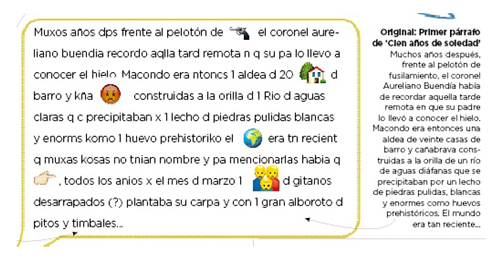
Figure 1. The chat language ‘rejuvenates’, but poses risks to the language.
The words have grammatical changes that, at first glance, do not transmit a significant message for those who do not know how to encode the message, but the message keeps its syntactic structure, for those who share this writing.
This way of symbolizing, whose purpose is to streamline the message graphics among the participants of social networks, keeps the meaning of the information constructed in its minimum expression. That is why, with the rise of social networks, its use has increased, managing a way of coding that has the written language as a basis, for the symbolization of messages.
Also, the use of emojis in conjunction with phrases, are part of the cyberlanguage, as detailed in the article, Socialization mediated in youth interactions. The construction of the I on Facebook.
The use of emoticons, abbreviations and other aspects such as the exchange of letters, repetition of the same, as well as the use of question marks and admiration, give life to a digital style better known as ‘cyberlanguage’ that uses new codes and is characterized by not differentiating between speech and writing, that is, a style where you write as you speak (Pérez; Ibarra, 2013, p. 10).
The authors describe cyberlanguage as the mutation of grammar, where graphic symbologies are used that, in addition to expressing the information, describe the mood state of the subject. In the same way, it is explained that it is a way where the spelling is based on how the subject expresses himself orally. These variations in the spelling, are accompanied by alterations in the words and symbols, which constitute and keep a message, where decryption is based on the learning and practice of that language. In the image extracted from the section, Cyberlanguage: Q sean :) s/ importar en q idioma (1), it is displayed:
(1) We recommend searching for the exact translation in the mother tongue.
Source: Carbone, 2016.
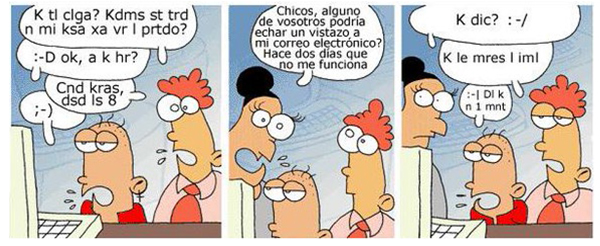
Figura 2. Cyberlanguage: Q sean :) s/ importar en q idioma.
As it is observed, the style of expression of the cyberlanguage is a code composed by lexical mutations, that are only comprehensible by those who share the same linguistic sign. In the same way, the way to graph the message is linked to the way of speaking that the subject has, that is, a shared link between orality and spelling.
The language of the Facebook social network, is a simplistic way of communication, in which simple words that send a more direct and quicker message are used. “Its objective is to make communication more expressive, attractive, flexible, playful and even more eloquent; its use is deliberately colloquial, which is why it captures some elements of orality (...) it is a new form of communication with its own codes that erases the limits between orality and writing”. (Rodríguez, 2015, p. 22).
As cyberlanguage, is used in an informal way, where the imagination to express a message in a reduced form, is the basis for the construction of the new codes symbolized by means of the abbreviation of words.
2. OBJECTIVES
Estudiar los factores que inciden en el uso de las abreviaturas comunicacionales del lenguaje escrito en la red social Facebook en los estudiantes de segundo y tercero bachillerato de la Unidad Educativa Pedro J. Montero.
3. METHODOLOGY
This work has a non-experimental-transectional research design, because the variables that are used to analyze the communication abbreviations of the Facebook social network do not change. In addition, the observation time of the observation unit is six months. This work has a descriptive type of research, because the variables and indicators used to analyze the communication abbreviations of the Facebook social network are described, where its content is broken down without performing a comparative statistical exercise. This study is based on the empiricist philosophical school, because knowledge of the human being is acquired through experience. That is why, the abbreviation given to the communicative language in the Facebook social network, is developed through practice.
3.1. Hypothesis
The factors that affect the use of communicational abbreviations of the written language in the Facebook social network are the use of chat as a means of virtual communication and the immediacy in the encoding of the message.
Table 2. Operational definition of the variables.
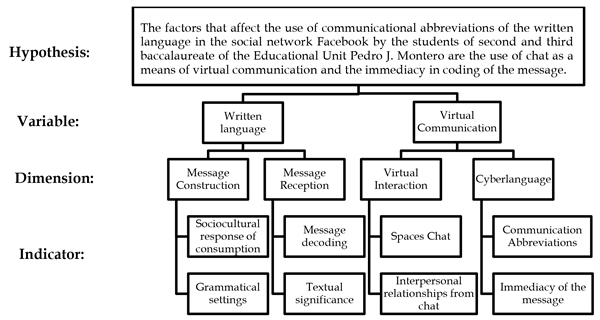
Source: Own elaboration.
3.2. Research techniques applied
After the development of the breakdown of the variables in dimensions and indicators, in this work the pertinent investigation techniques were selected to approach the sample public. Therefore, the techniques used are detailed below:
Bibliographic research: this research technique was used for the collection of scientific information that contributes to the study of written language abbreviations.
Open interview: it was used to know how the use of chat has affected the coding of messages and the grammatical problems it generates.
Projective test: used to determine, by means of images, the use of communicational abbreviations in the construction of texts and the decoding of the sample public.
Ideal situation: used to obtain information on what would be the grammatical model used in written communication.
Change of role: this technique was used to determine the sociocultural response of consumption of communication abbreviations and their use in interpersonal relationships from chat.
Survey: was used to quantify the use of communication abbreviations in the Facebook social network.
Likert scale: it was used to determine the sociocultural response of consumption of word alterations as a form of message construction.
Points scale: it was used to know the usefulness of chat as a means of generating interpersonal relationships through Facebook.
Intensity scale: this research technique was used to determine the chat spaces and the interaction of the sample public.
3.3. Population and sample
This research has a population of 159, for which the selected sample for this work is non probabilistic-by quota, because it focuses on a sample public that knows the research problem for the reliability of the study, therefore the following criteria:
4. RESULTS
Variable: Written language
Dimension: Message construction
Indicator: Sociocultural consumption response
Technique: Role change
If you were one of the people who build messages in an abbreviated way on the Facebook social network, what do you consider to be the influential factors to write in that way?
Fuente: Own elaboration.

Graph 1. Influential factors to use cyberlanguage.
Analysis: 40% of those surveyed consider that immediacy is the main influencing factor in the codification of abbreviated messages, as it allows a rapid response. On the other hand, 12% refers to the fact that laziness plays a fundamental role in the codification of the message, since the user’s vagueness leads him to configure the writing.
Variable: Written language.
Dimension: Message reception.
Indicator: Message decoding.
Technique: Survey.
Can you decode messages that contain emoticons to replace words?
Source: Own elaboration.
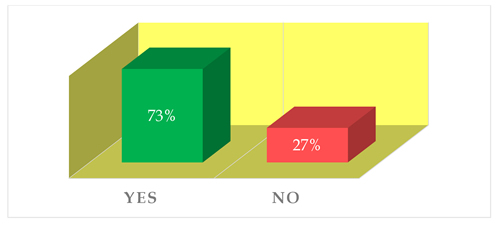
Graph 2. Decode messages that contain emoticons.
Analysis: unlike the decoding of messages abbreviated with words, 73% say they can decipher the altered content whenever it has emoticons, which shows a greater interpretation of the meaning of the emojis, as opposed to the reception of, only, words with cybernetic language. Despite this, 27% of the sample public indicates that they cannot understand the implicit information expressed by means of abbreviated messages that contain emoticons.
Variable: Virtual communication.
Dimension: Virtual interaction.
Indicator: Interpersonal relationships from the chat.
Technique: Scale of points.
Are messages issued in interpersonal relationships through chat?
Source: Own elaboration.
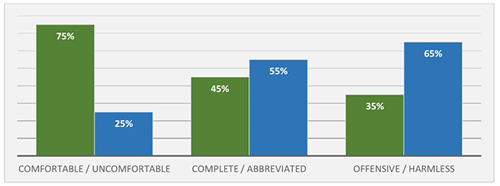
Graph 3. Messages in interpersonal relationships.
Analysis: the graph shows how 75% of the students indicate that the messages emitted through the chat are comfortable, which represents a degree of acceptance by the interaction space of the social network. On the other hand, 55% of those addressed indicate that the messages generated are abbreviated, being a less formalized context, allowing a greater time of interaction and a quick response (immediacy).
Variable: Virtual communication.
Dimension: Cyberlanguage.
Indicator: Communication abbreviations.
Technique: Survey.
Do the contacts you have on the Facebook social network use communication abbreviations in the publications or messages sent to you?
Source: Own elaboration.
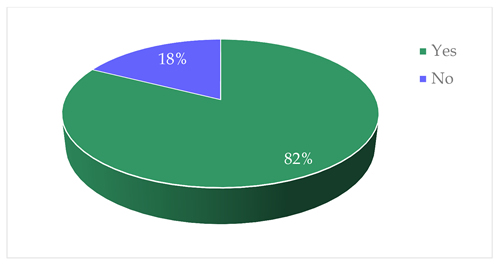
Graph 4. Contacts that use cyberlanguage.
Analysis: as shown in the graph, 86% of those surveyed indicated that the contacts that they have in the Facebook social network write in an abbreviated way. On the other hand, 14% indicate that their friends do not use cyberlanguage in publications, so it follows that they follow all the orthographic rules, in the spelling handled on Facebook.
5. CONCLUSIONS AND DISCUSSION
The management of the Facebook social network has led students addressed to the Pedro J. Montero Educational Unit, to the implementation of encodings away from the grammar rules, being influenced by the speed that requires the transmission of messages within it.
76% of young people make use of communicational abbreviations for the immediacy that it represents and speeding up the sending of messages, which allows an increase in the time of interaction with the receiver and a response at a higher speed.
Along with this, 86% of those surveyed mentioned that their contacts publish and send messages with grammatical alterations, so they must implement this symbology to be understood.
On the other hand, the decoding of the message with this type of coding seems not to be a problem for the students, since 59% of them can decipher the texts with cybernetic language and, 73%, when they are replaced or accompanied with emoji (emoticons), decreasing the probability of a message not captured.
Being Facebook a social network, the chat space that manages its interface is attractive for a large percentage of those addressed, with over 66% being attracted to using this medium to send information to users.
The development of the research allows us to synthesize that, knowing the written language as a communicative medium that, through elements encoded in a written way, transmits information to the perceiver, he is able to decipher the symbols through the learning of the spelling. This communicative medium is used by young people within the Facebook social network, allowing an agile sending of information, because for this, it is not necessary to have the presence of the interlocutors in the same space
However, the grammatical constructions used within the social network present variations, the same that are called cyberlanguage, this being a way of writing, in which words are reduced to their slightest expression. The use of this cybernetic language is due to the immediacy in the codification of the message and the speeding up in its sending, which allows a greater time of interaction.
In turn, relating to people who handle this writing within the Facebook social network, influences the recipient, so that he uses the same codes when issuing the response. All these analyzes show that the majority of students use cyberlanguage because of the immediacy in the interaction and interface that the social network handles, being an interactive and dynamic platform, where users are constantly sending and receiving information.
REFERENCES
1. Almansa A, et al. (2013). Redes sociales y jóvenes. Uso de Facebook en la juventud colombiana y española. Revista Comunicar, 40, 127-135.
2. Berlanga I, Martínez E (2010). Ciberlenguaje y principios de retórica clásica. Redes sociales: el caso Facebook. Enl@ce Revista Venezolana de Información, Tecnología y Conocimiento, 7(2):47-61.
3. Carbone F (2016). Ciberlenguaje: Q sean :) s/ importar en q idioma. Recuperado de: http://www.eldiaonline.com/ciberlenguaje-q-sean-s-importar-en-q-idioma/
4. Colás-Bravo P, González-Ramírez T, de-Pablos-Pons J (2013). Juventud y redes sociales: Motivaciones y usos preferentes. Revista Científica de Educomunicación – Comunicar, 40, 15-23.
5. Cortés-Campos RL (2015). Uso y consumo de redes sociales virtuales entre estudiantes universitarios. Un acercamiento a los hábitos de multitarea. Revista Iberoamericana de Producción Académica y Gestión Educativa, 2, 1-16.
6. Fernández I (2016). Fenómenos interlingüísticos en estudiantes universitarios foráneos asilados en Madrid. Recuperado dehttps://www.academia.edu/21600922/Fen%C3%B3menos_interling%C3%BC%C3%ADsticos_en_estudiantes_universitarios_for%C3%A1neos_asilados_en_Madrid?auto=download
7. González-Santamaría DM, González-González MA (2014). Lenguajes del poder. El chat en las redes sociales virtuales: lenguaje y libertad. Plumilla Educativa Revista de la Facultad de Ciencias Sociales y Humanas, 14, 57-72.
8. Ong WJ (2006). Oralidad y escritura Tecnología de la palabra. Argentina: Fondo de Cultura Económica.
9. Pérez J, Ibarra A (2013). La socialización Mediada en las Interacciones juveniles. La Construcción del Yo en Facebook. Paakat Revista de Tecnología y Sociedad, 3(4):1-12.
10. Rincón CA (2011). Oralidad/escritura. Recuperado de http://aprendeenlinea.udea.edu.co/boa/contenidos.php/cb10887d80142488399661377b684b60/511/estilo/azul_turquesa/1/contenido/capitulos/Unidad8OralidadyEscritura.PDF
11. Ríos L (2016). El lenguaje chat ‘rejuvenece’, pero supone riesgos al idioma. Recuperado de http://www.elheraldo.co/tendencias/el-lenguaje-chat-rejuvenece-pero-supone-riesgos-al-idioma-256388
12. Rodríguez L (2015). Apropiación del ciberlenguaje en jóvenes y adultos. (Trabajo para la obtención de Grado de Doctora en Ciencias Sociales y Humanidad). Universidad Autónoma de Aguascalientes, México.
13. Vaqueiro-Romero M (2012). Ciberlenguaje juvenil en las redes sociales. Congreso Iberoamericano de las Lenguas en la Educación y en la Cultura. Recuperado de http://www.oei.es/congresolenguas/comunicacionesPDF/Vaqueiro_Montserrat.pdf
14. Zapatero-Cáceres MD, Brändle G, Ruiz-San-Román JA (2013). Comunicación interpersonal en la web 2.0. Las relaciones de los jóvenes con desconocidos, en Revista Latina de Comunicación Social, 68, 436-456.
AUTHORS
Jonathan Sabando Rendón: Bachelor of Social Communication Sciences from the University of Guayaquil. Research specialist who develops topics related to linguistic constructions, symbolic-cultural processes, and resignification of languages. The author has experience in communication and culture research, communication and social development.
jonathan.sabandor@ug.edu.ec
Tomás Rodríguez Caguana: PhD in social philosophy from the University of Havana. Master in communication. Three graduates in communication and gender. Bachelor of Communication. Author, and co-author of fifteen scientific articles in each of the quintiles in which scientific production is divided. Research manager of the School of Social Communication of the University of Guayaquil. Full professor of that soul Master. Guest professor at the University of the Arts.
tomas.rodriguezc@ug.edu.ec
Orcid ID: https://orcid.org/0000-0002-4673-9295